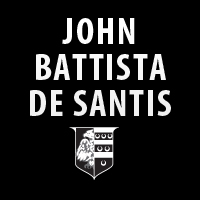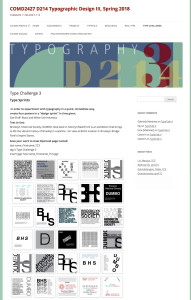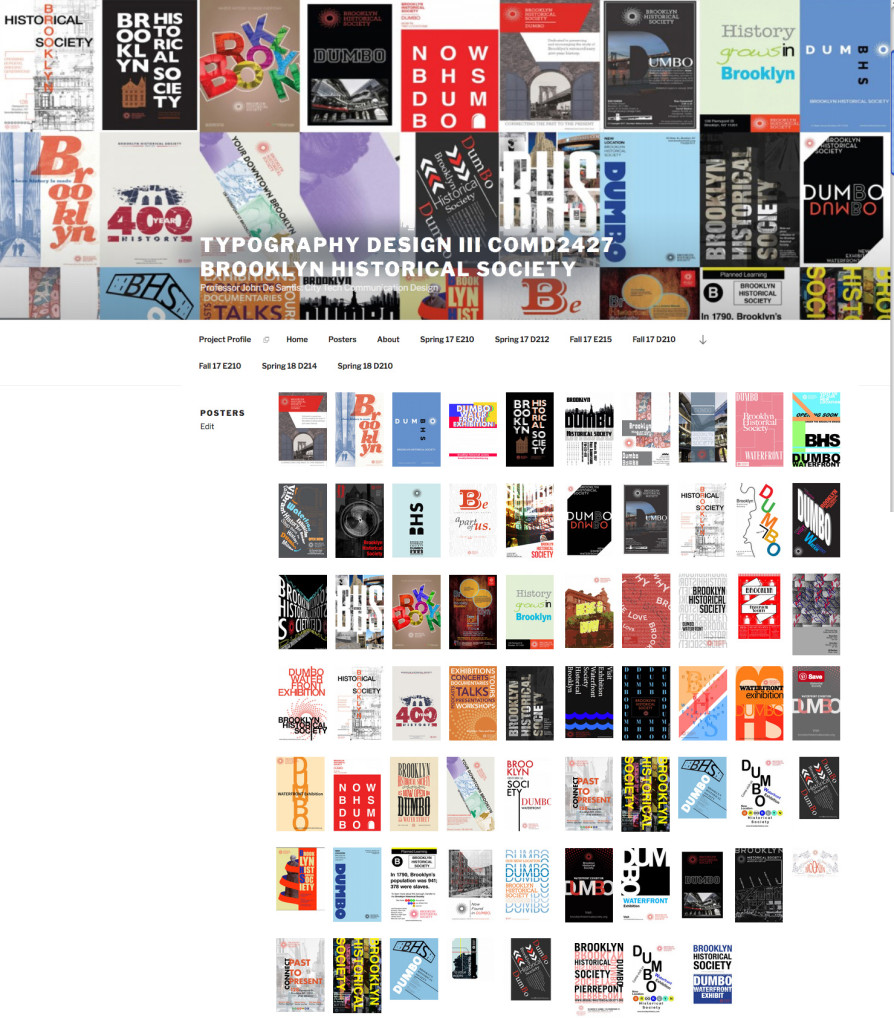 This week we’re profiling Professor John De Santis who teaches COMD2427 Typographic Design III in the Communication Design Department. Prof. De Santis joined the City Tech community as an adjunct professor in the Fall of 2016.
This week we’re profiling Professor John De Santis who teaches COMD2427 Typographic Design III in the Communication Design Department. Prof. De Santis joined the City Tech community as an adjunct professor in the Fall of 2016.
How were you introduced the platform and when/how did you begin actively using the platform to support your pedagogy?
In my first semester here, after speaking with my course leader, I took a look at the OpenLab. I attended a seminar on it and then created an OpenLab course. The site contains basic information, online resources and assignments. My current course load is multiple sections of Typography III, which focuses on advanced typographic design principles and applications for web, print and motion. In subsequent semesters the subject kept evolving and naturally expanded my OpenLab course and project content.
Why did you decide to start using the OpenLab?
It has an intuitive interface that allows for easy creation and management of dynamic course content. The OpenLab’s quick ability to share and communicate typographic topics pulled from online sources in the field directly to students was a key factor. The support staff was also very helpful with any questions, etc. It made it more efficient than trying to integrate Blackboard into course.
Can you describe the ways you have integrated the OpenLab into your pedagogical practices?
I utilize the OpenLab in a variety of applications. My goal was to create a focal point for typographic design principles, history, creative process and current trends. Students are able to refer back to relevant information for projects, assignments, and lectures as needed during project design and production. The OpenLab also enhances the depth and accessibility of assignment/project content. I also incorporate it into assignment/project administration and grading outcomes. The OpenLab is part of my method of instruction, design evaluation, assessment, as well as communication.
How has the OpenLab transformed or expanded your pedagogy, and the pedagogical values you’re able to realize in your courses and educational practice?
The OpenLab enables me to incorporate time constraints and technical requirements of the real world environment in the classroom.
By requiring usage of OpenLab and specific upload protocols such as file and post naming conventions, correct categorization of posts etc, students learn how to meet specific requirements, which will be essential to their future careers in design and other fields.
 The OpenLab has also assisted in developing student-critique skills and process. For example, in a weekly critique series of industry typographic work called “Type Talk”, students comment on the work posted and can interact with the other student critiques.
The OpenLab has also assisted in developing student-critique skills and process. For example, in a weekly critique series of industry typographic work called “Type Talk”, students comment on the work posted and can interact with the other student critiques.
It gives me the ability to expand on the timeliness of relevant content and topics pulled from design industry.
I am also able to incorporate course curated multimedia content from Lynda.com, Kanopy.com, interactive learning tools, portals, social media feeds and news.
“Type Challenges” are in class typographic and creative exercises I created on the OpenLab; they enhanced instruction of the design and creative processes with time constraints including uploads to the OpenLab as final outcome.
Aside from courses, how does the OpenLab support your pedagogical practices and ambitions? (Note: Think broadly about public education initiatives, course coordination, non-academic student support, clubs, and projects, etc.)
Technology usage in pedagogy is an integral part of instruction. OpenLab utilizes appropriate applications within course structure which drives and enhances learning outcomes and awareness. I have found that students get a sense of accomplishment in their course assignments when the public is given access and exposure to their work. For example one of my assigned projects, the OpenLab Brooklyn Historical Society Project, was assigned to multiple sections of Typography III.




